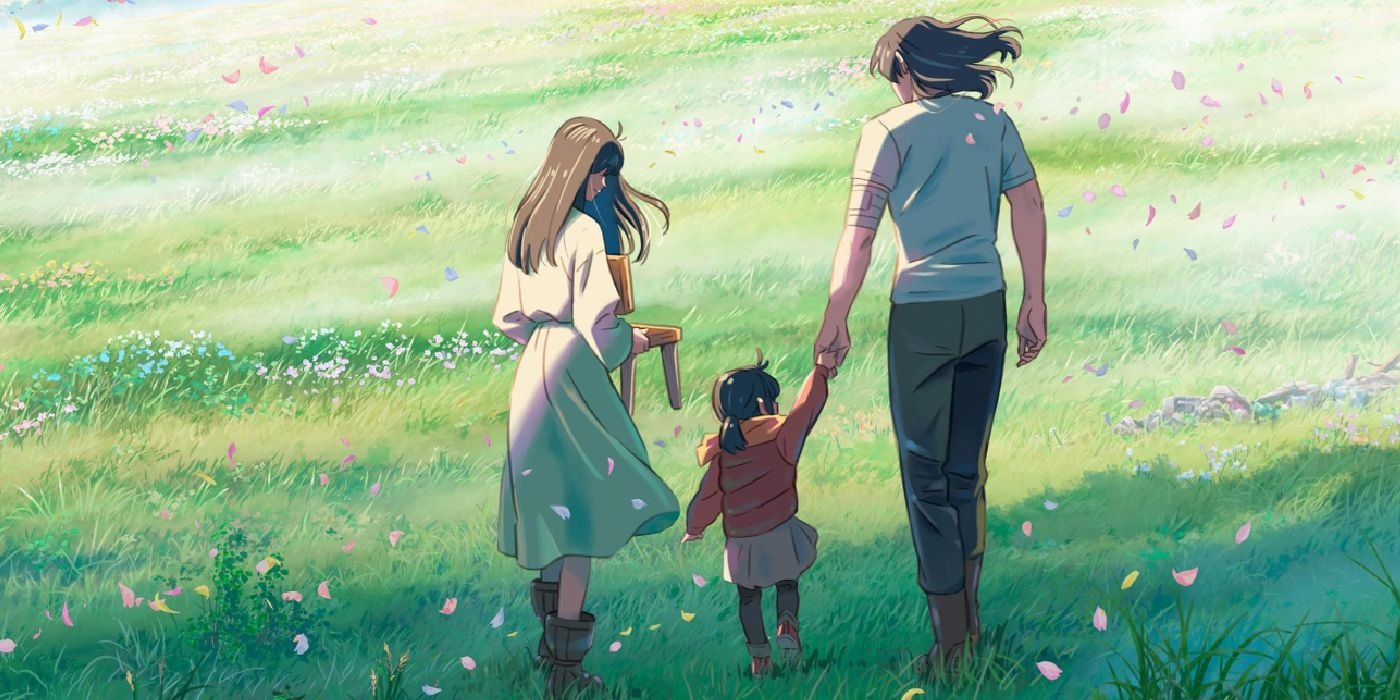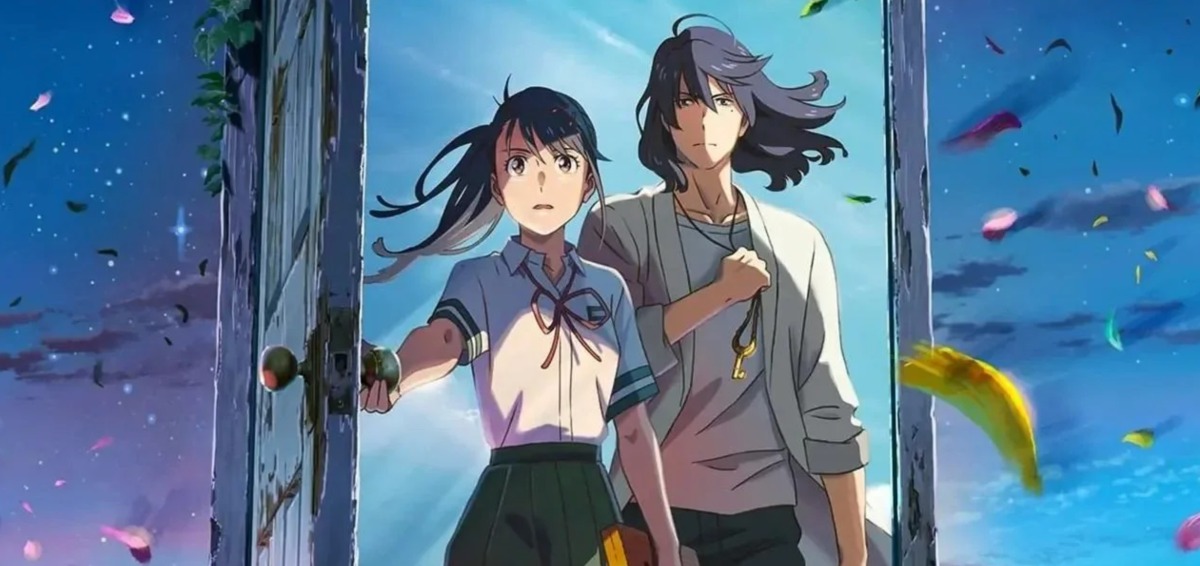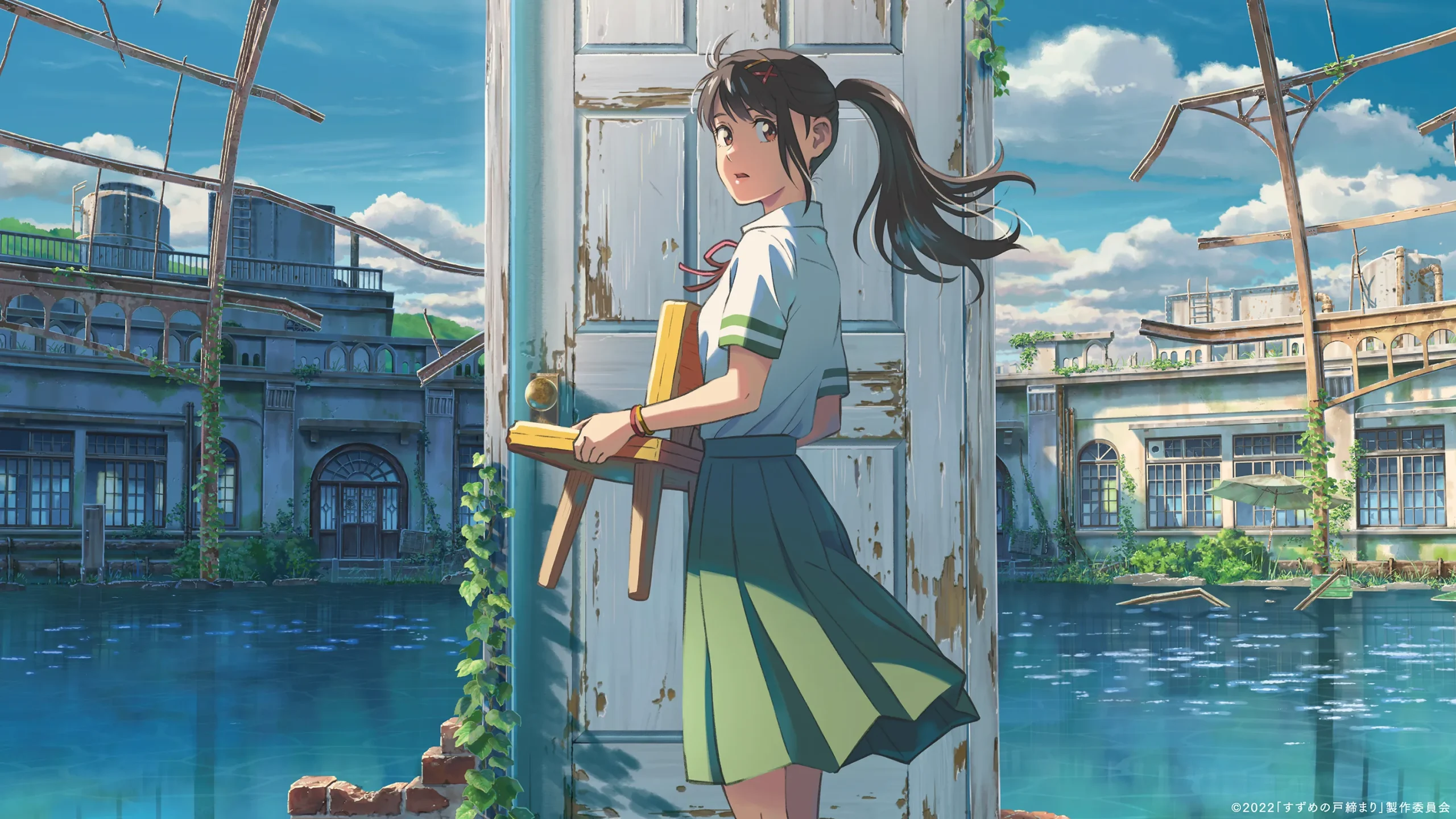Makoto Shinkai’s Suzume ends in a way that might appear mysterious at first glance, but once it is viewed in the context of the themes he has explored in his past works, the meaning becomes quite clear. The final part of Suzume may seem difficult to understand initially.
Once a viewer considers the message behind it and how it connects to Shinkai’s style, it becomes easier to grasp. Makoto Shinkai, the director behind the emotional anime hits Your Name (2016) and Weathering With You (2019), has added Suzume to his growing list of heartfelt animated stories.

The plot follows a 17-year-old girl named Suzume on a personal journey that takes her through different parts of Japan affected by natural disasters. Her mission involves closing strange doors that bring about destruction.
What Happens in Makoto Shinkai’s Newest Masterpiece?
Things start quietly for Suzume in a small town in Kyushu, which is Japan’s southernmost main island. Her path changes when she comes across a young man called Souta, who goes around Japan in search of mysterious doors hidden in abandoned ruins.
When Suzume discovers one of these doors near her town, she mistakenly opens it and sets free a guardian deity, which in turn releases a supernatural force known as “the Worm.”
After she and Souta succeed in sealing that door, similar doors begin appearing in other locations across Japan, and each one must be shut before the Worm brings about an earthquake in that area.
Souta ends up suffering a curse from the guardian deity Daijin, which transforms him into a child’s chair that once belonged to Suzume.
This object was something she had kept in memory of her late mother. With Souta stuck in this new form, Suzume is left with a harder task ahead. Regardless, she continues her journey around Japan with courage, interacting with different people and having life-changing experiences that help her grow stronger and face her painful history.
The loss of Suzume’s mother during the Great Sendai Earthquake of March 11, 2011, left a deep wound in her heart. Though her aunt Tamaki raised her with love and care, the trauma remained. Eventually, her journey takes her to Tokyo, where Souta makes a selfless decision and turns into the Keystone required to trap the Worm again.
What Happens to Suzume & Souta?
The conclusion of Suzume’s journey doesn’t end with Souta turning into the Keystone. Rather than walk away from someone she has developed strong feelings for, Suzume chooses to fight for him.
She receives support from her aunt Tamaki and Souta’s friend, Serizawa, as they make their way back to her hometown and the destroyed house she once shared with her mother.
Souta’s spirit is now stuck in the Ever-After — a spiritual place connected to the strange doors — and the only way Suzume can reach him is through the same door she entered as a child during her desperate search for her mother.
Once inside the Ever-After, the guardian deity Daijin changes its mind and decides to assist Suzume in saving Souta. But trouble brews, as the Worm struggles to escape and cause destruction in the physical world.
Daijin transforms back into a Keystone, and with the help of its twin, Sadaijin, they offer themselves so Suzume and Souta can use their strength to trap the Worm in the Ever-After once more. Following this event, Suzume spots her younger self wandering within the spirit world and goes to comfort the little girl.
She hands her the same chair her mother built before passing away and assures her that she will experience love and happiness in the future. After this emotional moment, Suzume and Souta return to their reality and carry on with their lives.
Suzume’s Ending Explained
To grasp the meaning behind how Suzume ends, it is necessary to understand that both the characters and their journey serve to deliver a heartfelt message. In an interview Shinkai gave to Hollywood Reporter, he mentioned how the 2011 earthquake changed his outlook.
It led him to feel that making art just for entertainment no longer made sense. Instead, he wanted to use his storytelling to reflect on that painful experience and express its lasting effect. Suzume came from this decision and so did the ideas behind his earlier works.
It was that earthquake on Japan’s eastern side in 2011 that gave Shinkai the inspiration to create this film. He felt the need to include disaster-related themes in his storytelling and use animation to process such events. Within the story, the Worm stands for nature’s destructive force, which stays hidden until something triggers it.
The abandoned places where the doors appear reflect how the emotions of the people who once lived there still linger. Souta explains that these feelings help to keep the land calm. As Suzume travels across the country, the story highlights both Japan’s beauty and the tragic memories disasters can leave behind.
Shinkai’s earlier films, Your Name, and Weathering With You, also dealt with how people respond emotionally to natural tragedies. What individuals can do in such situations is accept their place within a bigger picture and try to keep moving forward.
The doors Suzume and Souta close symbolize the link between the past, present, and even the future. Shutting them reflects the effort to face the past—no matter how painful it is—and try to heal from it. Time also plays an essential role in Shinkai’s work and appears again in Suzume.
When she was younger and entered the spirit realm, she saw someone she thought was her mother. That memory faded as she got older, but the ending reveals that it was her older self she had met. Souta had earlier explained that in the Ever-After, all time exists at once.
This makes such meetings possible. Although the idea of meeting one’s future self is familiar in storytelling, this particular case handled it in a way that felt more meaningful than usual.
What Suzume is Really About
The message behind Suzume focuses on how memories and emotions can link people together. This is shown in how Suzume and Souta must reflect on the lives and feelings of people connected to each location to shut the doors.

Even though the ending may not come with the emotional punch of Your Name or the sadness found in Weathering With You, the conclusion works well to pass across what Shinkai intended his audience to feel.
Suzume no Tajimari’s Real Meaning Explained
The title given to Suzume in Japan is Suzume no Tajimari, which means something like “Suzume’s Locking Up.” This title fits the story perfectly, as it relates directly to Suzume and Souta’s actions of locking doors to stop natural disasters from spreading through Japan.
Apart from that surface meaning, it also points to Suzume trying to hide away her own emotions, avoiding them instead of dealing with her pain. But if you look even deeper, Suzume Locking Up sums up the emotional state she reaches in the movie’s final scenes.
Throughout most of the film, Suzume carries the weight of her trauma, which holds her back from moving forward. When she finds her childhood self in the Ever-After and hands her the chair, it’s a turning point. That act helps her finally let go and start living with more peace and purpose.
This shows how the title Suzume Locking Up also mirrors the internal change she experiences by the end of the film. Even though people watching the English version may not have missed too much, it is still clear that the original title carried layers of meaning.
As seen in how carefully Suzume ends, Shinkai pays close attention to every part of his movies. The fact that the film’s title manages to reflect both the plot and Suzume’s emotional growth while remaining short and memorable is a strong example of how thoughtful his work tends to be.



